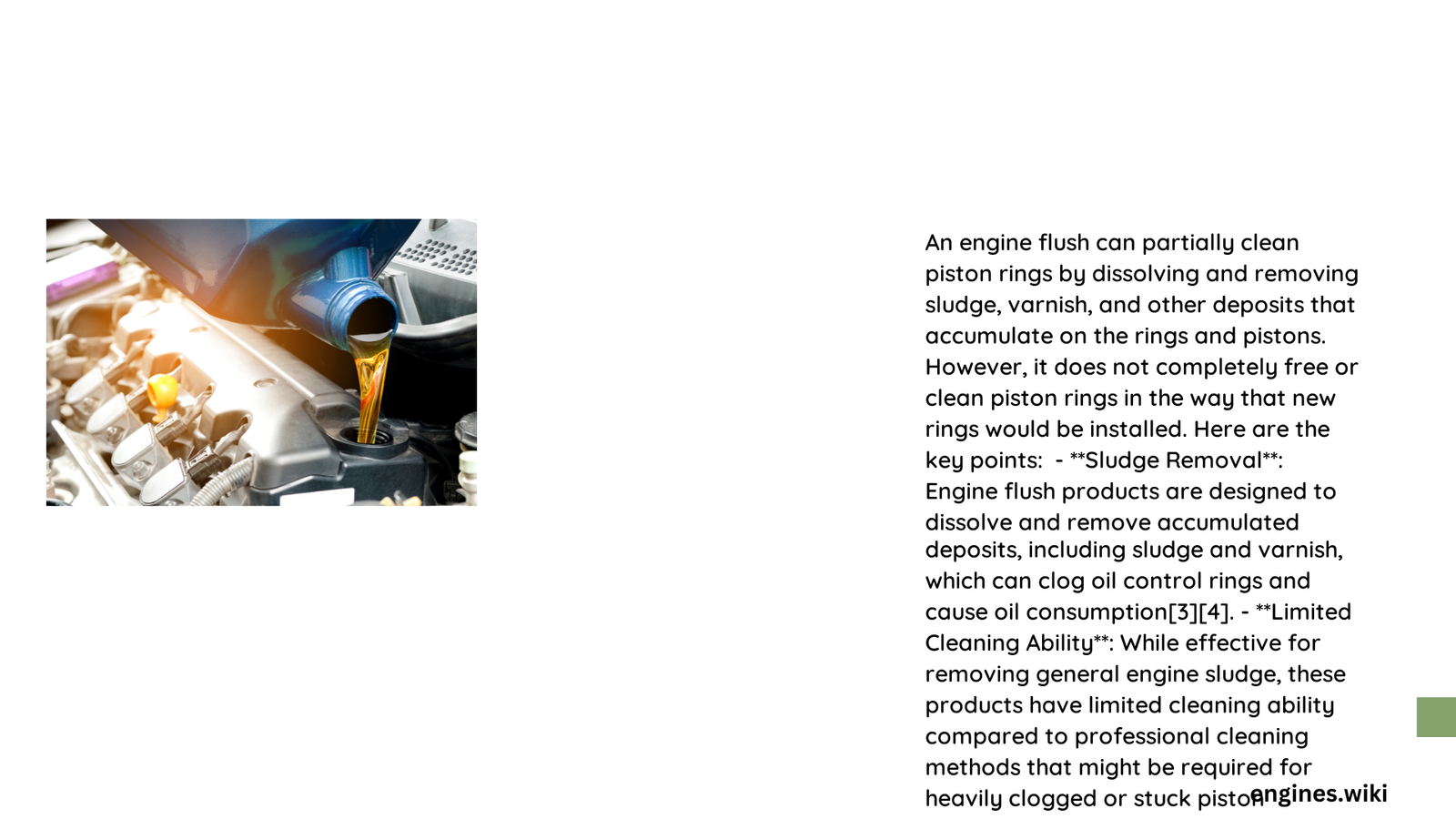Engine flush can potentially clean piston rings by dissolving carbon deposits, sludge, and accumulated grime that restrict ring movement and cause increased oil consumption. Vehicle owners experiencing performance issues or excessive oil consumption might find engine flush a cost-effective solution compared to extensive mechanical repairs. However, effectiveness depends on the engine’s condition, age, and specific flush product used.
What Causes Piston Ring Contamination?
Piston rings accumulate contaminants through:
- Carbon Buildup: Incomplete combustion residues
- Sludge Accumulation: Old oil breakdown
- Moisture Condensation: Internal engine environment challenges
How Do Engine Flushes Work on Piston Rings?

Chemical Mechanism of Cleaning
Engine flush products contain specialized solvents designed to:
- Dissolve Hardened Deposits
- Break Down Carbon Formations
- Loosen Stuck Piston Rings
| Flush Product | Effectiveness | Average Cost |
|---|---|---|
| Liqui Moly | High | $20-$30 |
| BG EPR Flush | Very High | $25-$40 |
| Marvel Mystery Oil | Moderate | $10-$20 |
What Are Realistic Expectations from Engine Flush?
Performance Improvement Scenarios
Potential outcomes include:
- Reduced Oil Consumption: 20-40% reduction possible
- Improved Compression: Marginal restoration
- Enhanced Engine Responsiveness: Smoother operation
What Limitations Exist?
Critical Considerations Before Flushing
Warning Signs Indicating Limited Effectiveness:
- Engines with over 150,000 miles
- Significant mechanical wear
- Previous unsuccessful maintenance attempts
What Professional Mechanics Recommend?
Expert Insights on Piston Ring Cleaning
Mechanics suggest:
- Diagnostic Assessment: Before flush application
- Gradual Cleaning Process: Multiple gentle treatments
- Follow Manufacturer Guidelines: Specific to vehicle model
How to Maximize Engine Flush Effectiveness?
Strategic Application Techniques
- Use high-quality flush products
- Follow precise manufacturer instructions
- Combine with regular oil changes
- Monitor engine performance post-treatment
What Are Alternative Solutions?
Comprehensive Approaches
- Professional engine decarbonization
- Partial engine rebuild
- Targeted piston ring replacement
Technical Breakdown of Cleaning Mechanism
Engine flush operates through:
- Solvent Penetration: Breaking molecular bonds in deposits
- Suspension of Contaminants: Lifting debris from surfaces
- Emulsification: Converting solid particles into suspendable state
Recommended Frequency of Engine Flush
| Vehicle Mileage | Recommended Frequency |
|---|---|
| 30,000-60,000 | Every 24-36 months |
| 60,000-100,000 | Annually |
| 100,000+ | Consult mechanic |
Final Technical Assessment
While engine flush can clean piston rings, success depends on multiple variables. Moderate expectations, professional guidance, and systematic approach maximize potential positive outcomes.
Precautionary Notes
- Not a permanent solution for severe mechanical issues
- Individual results may vary
- Professional assessment recommended
Recommended Next Steps
- Conduct comprehensive engine diagnostic
- Select appropriate flush product
- Follow precise application instructions
- Monitor post-treatment performance
References:
– AudiWorld Forum Discussion
– Saab Central Maintenance Thread
– E46 Fanatics Engine Maintenance Guide
